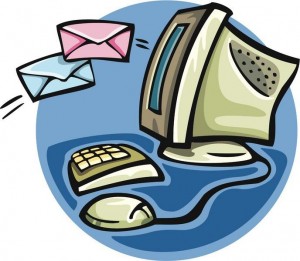If you’re like a lot of us, you get so much email every day that you might spend as little as 15 seconds scanning a message to determine how it applies to you.
Now, imagine that other people are reading your email the same way. If they can’t quickly identify the purpose of your message, they’ll probably delete it or leave it in the Inbox for “later” – if later ever comes.
Here are some tips to ensure that your email messages are read and get the attention they deserve.
Have a clear purpose
When recipients receive your email message, they should be able to see at a quick glance how the message relates to them and why it’s important.
They may be looking at a preview of your message in Microsoft Outlook or on a smart phone. Or they may see only subject lines in their inbox. If your subject line is confusing and irrelevant, your email will surely get deleted in a hurry.
Here are some things you can include in subject lines to make sure the reader opens your mail:
A standard subject heading such as “Action Requested,” “Response Requested,” “FYI,” or “Read Only.”
The meaningful objective or supporting project that the message relates to, for example, “FY ‘05 budget forecasting.”
The required action if applicable, for example, “Consolidate departmental budget spreadsheets.” The due date if applicable, for example, “Due by July 7.”
An example of an effective Subject line is “Action Requested—Consolidate all department spreadsheets for FY ‘06 budget and return to me by June 15th.”
Tell them what to do
Be completely clear about the actions you want the recipients to take.
Be specific and put all the material that is related to an action in one place. To get even faster responses, talk about how the action relates to the recipient’s objectives, and always give due dates.
It’s also important to clarify what you want the recipient to do. There are basically four types of actions you could request:
Action: The recipient needs to perform an action. For example, “Provide a proposal for a 5% reduction in travel expenses.”
Respond: The recipient needs to respond to your message with specific information. For example, “Let me know if you can attend the staff meeting at 9am Friday.”
Read only: The recipient needs to read your message, and no response is necessary. For example, “Please read the attached sales plan before the staff meeting on August 12th.”
FYI only: The recipient should file your message for future reference. In fact, even reading the message is optional. For example, “Enclosed for your records are your completed expense reports.”
Give them all of the data
Make sure you give recipients all of the information they need to complete an action or respond successfully to your request.
Your co-workers shouldn’t have to come back to you asking for information, whether it is a supporting document or a link to a file on a shared website.
You can include supporting information in the body of the message, in an attached file, or in an attached email.
Send only to necessary people
Target your message to the appropriate audience. Only people who have to complete an action on the Subject line should receive your message. Be thoughtful and respectful when you enter names on the To line. People observe your thoughtfulness and the results are more effective.
No forwards!
While everyone appreciates a little humor and a sanity break at the office, save the funny forwards, jokes, and cute pictures for personal email.


